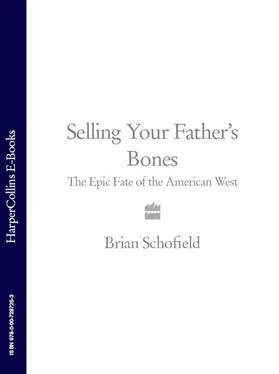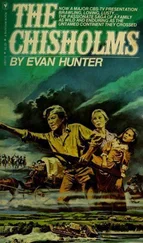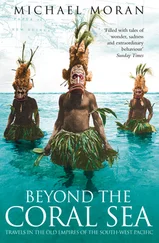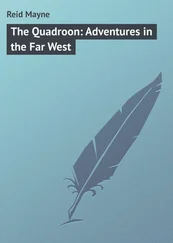It was most certainly not a life of ease, but the Nimiipuu were blessed with a bountiful and ceaselessly beautiful territory, of clean, well-stocked rivers, forests dense with game and plentiful meadows, and their comparative natural wealth and subsequent inclination towards openness, friendliness and, where possible, peace was well captured by one of their earliest non-Indian friends, the historian L. V. McWhorter, in 1952: ‘They were the wilderness gentry of the Pacific Northwest.’
One of the most oft-repeated assertions when modern Nimiipuu discuss their ancestors is that they had no religion in the compartmentalized, Sunday Service meaning; instead they possessed an all-encompassing way of life, in which devotional acts and the actions required for living were inseparable. Spirituality was recognized in everyday moments, such as greeting dawn in prayer or song; in celebrations of the various significant events in the natural calendar, such as the arrival of the salmon or the ripening of the camas roots; and a child’s developing capacity to participate in the life of the band was also sanctified in a series of rites, such as a girl’s first outing to gather roots or a boy’s first hunting expedition.
The most significant and revealing of these rites was the spirit quest, the search for a wyakin, or protective spirit. After several years of preparatory conversations with the elders, each Nimiipuu child (when aged from around nine to fifteen) would head away from the lodges and into the wilderness, without food or water, to begin a lonely, cold vigil for the arrival of their personal wyakin. Sitting alone on a mountain-top or outcrop sometimes for days on end, they would seek the revelation of a source of spiritual strength, an image, sometimes real, sometimes coming in a dream or hunger-induced hallucination, that filled their consciousness and left them certain that protection was being offered — an eagle soaring above them, a bear crossing the horizon, a passing hummingbird, rain falling in the distance. Blessed with this vision, they stumbled back home, now in personal and private possession of a supernatural guardian, to whom they could appeal in times of tribulation, effort and, for some, war.
The wyakin quest offers us today a powerfully illuminating vision: of a Nimiipuu world view in which everything within their lands possessed a spiritual centre. Protection was not the preserve of angels or divinities, because spirits resided in creatures, rivers, land forms, weather patterns, all of creation. And to be connected to that natural order, partly revealed in a knowledge of the patterns and foibles of the local environment on which survival depended, partly in your respect for your spiritual kinship with all nature, was to be a Nimiipuu. The band leader whose eloquence would earn him unwelcome fame, Young Joseph, expressed this state of permanent communion best:
As the Nez Perce man wandered through the forest the moving trees whispered to him and his heart swelled with the song of the swaying pine. He looked through the green branches and saw white clouds drifting across the blue dome, and he felt the song of the clouds. Each bird twittering in the branches, each water-fowl among the reeds or on the surface of the lake, spoke its intelligible message to his heart; and as he looked into the sky and saw the high-flying birds of passage, he knew their flight was made strong by the uplifted voices of ten thousand birds of the meadow, forest and lake, and his heart, fairly in tune with all this, vibrated with the songs of its fullness.
In a time of great stress, he reduced this sentiment to its essence: ‘The earth and myself are of one mind.’
This affiliation to the earth was redoubled by the prominent position that ancestors held in Nimiipuu culture. Referred to often in ceremony and conversation, commemorated in careful genealogy and in the passing on of names, possessions and skills, the ancestors were a constant presence in the villages, with those who have passed on serving both as an example in life and a familiar face in death. Nez Perce spiritual leader Horace Axtell received this explanation from an elder: ‘He said, “This is what we do. We look at these tracks laid by our ancestors and we follow them to where they are now. These tracks lead us to the Good Land, The Good Place, where all Indians go after they have spent their time on this earth.”’
The spiritual power of songs, prayers, dances — and of everyday actions such as berry picking or salmon fishing — thus sprang from two sources, the affiliation to the spirit forces of creation and also the connection, by repetition of their actions, words, names and tunes, with the past Nimiipuu — as Axtell observes, ‘the reason our spirituality is so strong is because it comes from our old people, our old ancestors’.
This tradition contributed greatly to the Nimiipuu’s most historically significant shared characteristic: their attachment to their homelands, to the sparkling landscapes of the Wallowa, Snake, Clear-water and Salmon valleys. If your route to the Good Place is in your father’s footsteps, where else can you live but in his home? And, if the spirits of your ancestors are constantly among you, how much more sacred are the lands in which they are buried — land not demarked by a cluster of wooden crosses and a picket fence, but by the entire area in which your ancestors are part of the spiritual community, a community of which you are also a member? Persuading non-Indian visitors to comprehend this unbreakable bond with a specific area of land and water has always been difficult. Chief Seattle, from another Pacific Northwest tribe, the Dwamish, said the following to a white interloper in 1855:
You must teach your children that the ground beneath their feet is the ashes of our grandparents. So that they will respect the land, tell your children what we have taught our children, that the earth is our mother. Whatever befalls the earth befalls the children of the earth. If you spit upon the ground you spit upon yourselves. Our dead never forget the beautiful world that gave them being.
The Crow chief Curley was forced to make a similar point when trying to preserve the remnants of his people’s homelands in 1912, telling white people who wanted the land for cultivation and enrichment: ‘You will have to dig down through the surface before you can find nature’s earth, as the upper portion is Crow. The land, as it is, is my blood and my dead.’
The homeland was inseparable from both individual growth and community life. Personal wisdom was acquired not only through the ancestors’ stories and skills, but through direct experience of the landscape, the seasonal whims and the interrelations of the flora and fauna, that both dictated survival and taught the young Nimiipuu their inseparable link to what modern Native American thinker Donald L. Fixico calls ‘the Natural Democracy’ of the home landscape — ‘This democracy is based on respect. In this belief, all things are equally important. Where a native person grows up is relevant to how one understands all things around him or her…and this set of surroundings becomes fixed in the mind like reference points for later in life.’ From a community perspective, the homeland conferred humility: its encapsulation of the past, present and future of the Nimiipuu serving as a reminder from dawn to dusk that individual fulfilment took second place to the continuation of a narrative of which your life was a small but integral part.
It’s important not to romanticize excessively the Nimiipuu’s relationship with the natural world, as many sympathetic chroniclers of Native America have. The image of the American Indian as the irreproachable steward of an unsullied continent is a powerful and popular one — and one that has also been ferociously challenged in recent years. The Nimiipuu, of course, were human beings, inclined towards improving their lives and capable of changing their surroundings, and they affected their landscape through hunting, harvest, burning and grazing. But what seems certain is that not just their spirituality but their survival did depend on a cautious management of the naturally occurring flora and fauna around them. As numerous tribal oral histories testify, if you didn’t let enough salmon escape the fish traps, there’d be nothing in those traps in three years’ time. Hunt elk while they were carrying or caring for foals and there would be fewer elk the following year.
Читать дальше












